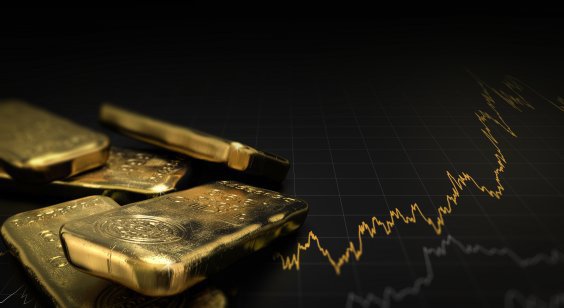Gold bugs are contemplating the first rate hike by the U.S. Federal Reserve in nine years on Thursday, and evidence suggests an increase could buoy the precious metal over the next few months.
Data from the London Bullion Market Association and the St. Louis Federal Reserve shows that gold’s current trading pattern is showing an “odd similarity” to its performance around the last two rate-hiking cycles.
“Both June 1999 and June 2004 saw gold trade 6.6 percent lower from three months before (a rate hike). It then rallied,” Adrian Ash, the head of research at online bullion trader BullionVault, said in a note this week dissecting the data.
“As it is, gold starts this week some 6.5 percent lower from three months ago. Should that level hold, and if the Fed (does) dare to hike, gold’s behavior going into a U.S. rate-hiking cycle will look weirdly regular.”
Ash highlighted that gold rallied over 10 percent in the 12 months following the last two rate hikes and was up 14 percent in the three months after the rate move in June 1999. However, he conceded that historical averages can “lie” and economic circumstances are very different this time around.
Traditionally, gold has had an inverse relationship to interest rates – pushing higher during bouts of ultra-loose policy – and is also used as a hedge against inflation. Monetary stimulus like quantitative easing can stoke inflation, according to many experts, and thus the demand for the precious metal usually increases when rates are low.
The commodity was trading at $1,116.06 per troy ounce at midday London time on Thursday and has sunk over 5 percent year-to-date. It has climbed around 0.8 percent so far this week but is still 40 percent lower from a peak seen in September 2011 and is trading at five-and-half-year lows.
Experts have been busy deciding where the price will find a floor and whether it can now push higher in an a environment where monetary policy is tightening. Gold mining CEOs, like Vitaly Nesis from Polymetal, are bullish on the commodity and believe the declines have not been as dramatic compared to those seen by other metals.
There’s also the added complication that prices are nearing levels where mining is no longer profitable, meaning miners will naturally have to cut back, thus buoying prices.
Neil Passmore, is the financial advisory firm CEO of Hannam & Partners, and told CNBC Monday that after some serious losses for the gold bugs, they might be in line for some returns if the Fed does decide to lift rates.
“(The Fed decision) probably creates a little bit of local weakness for a few more months, likewise, I think there’s a few pressures on the supply side of gold,” he said.
“But medium to long term I think it’s very hard not to remain quite bullish on gold, actually.”




